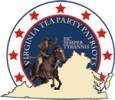The tea party movement which sprang up overnight is still defining itself. That’s the natural flow of a movement that is bottom up- with many leaders of organizations, but not a single national top down leader. The movement, which has been described by some as “ants” because of the unified approach to issues despite no singular national communication chain, seems to be able to move together.
The 2010 mid-term elections revealed a tension within the tea party movement. There is a percentage of tea party supporters who decry the state of Congress and their local government, who at the same time feel that the tea party should not run candidates, nor endorse or advocate for any particular candidate. The question then becomes; if elected officials determine which bills get advanced or which bills are thwarted or killed, then shouldn’t the tea party movement have its own people in those positions? Outside pressure is important. Being on the inside, where policy is voted on is better.
As the tea party movement matured it also looked back to the nation’s roots. The framers of the U.S. Constitution wrote a document that gave most of the legislative power to the states, not the Federal government. The tea party movement started to redirect its focus to local and state level government. It is at the State level that the Federal government can be restrained most effectively, not always by direct voter intervention at the Federal level.
Voters can only elect five federal officials, but depending on their state and locality can elect up to 30 officials. The liberal progressive movement, which aims for centralization as a means of control, wanted voters to focus on the national government, while they maneuvered people into positions on school boards, city councils, county government, judgeships, Secretary of State offices, and so on. Thus the left was able to build a significant political infrastructure while conservatives were listening to talk radio.
The Virginia Tea Party Alliance (www.vateapartyalliance.org) grew out of the need for tea parties to be able to engage in elections. Although the law says that 501 (c ) 4 organizations can endorse candidates and engage in electioneering, (Citizens United VS FEC) tea party groups, like the Hampton Roads Tea Party and others, saw a need for an independent tea party organization to facilitate candidate development and candidate campaigns. There needed to be a mechanism, especially here in Virginia, by which tea party supporters could begin to coalesce around candidates in order to advance the principles of fiscal responsibility and limited government.
One cannot expect to “do politics differently” using yesterday’s political tools and methods. We need an entirely new orientation, candidate field and political network. We need new people, new ideas and new methods. To that end, the Virginia Tea Party Alliance will begin to build a different 21st Century political structure that reflects the timeless principles set forth in the founding documents of the United States, and the changing dynamics of The Virginia Tea Party Alliance (VATPA) will recruiting, train, and field, candidates and campaign staff. It will work on voter mobilization. It will be another voice in the growing chorus of the tea party.
____________________________________________________
Karen Miner Hurd is the Founder and Executive Director of the Virginia Tea Party Alliance. www.vateapartyalliance.org Karen began her work in the tea party movement when she founded the Hampton Roads Tea Party in March 2009. Along with other leaders in the tea party movement, Hurd is a recipient of the Heritage Foundation’s 2010 Henry Salvatori Prize for American Citizenship. She lives in Virginia Beach with her husband and family.





